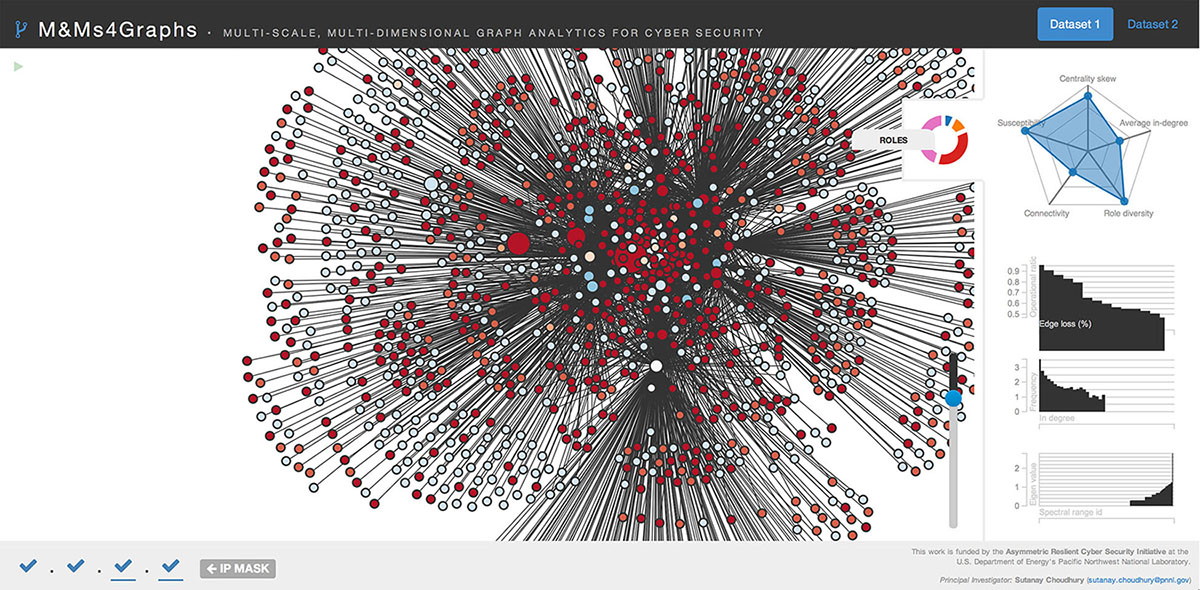Guest blog post by Sutanay Choudhoury, Senior Research Scientist @ PNNL:
There is a growing emphasis on "resilience" in the cyber security community today, signifying a shift from the adversarial detection mentality. Cyber defenders are always at a disadvantage with respect to the attackers due the large number of strategies an attacker may pursue, and sophisticated hackers successfully disguise their behavior as normal activity. Resilience is defined as the ability of an enterprise to keep its infrastructure functioning even in the face of impediments such as attacks, power failures. Our world relies on interconnected data, services, and computing resources. Failure in any part of the system could have disastrous consequences on the rest of the system.
The M&Ms4Graphs (Multi-scale, Multi-dimensional Graph Analytics for Cyber-Security) project at Pacific Northwest National Laboratory, USA uses graph-theoretic models to provide continuous updates on system states as part of enabling a resilient cyber infrastructure. By studying information flows modeled as large-scale dynamic graphs, this project developed a multi-scale framework that can account for behaviors spanning from individual machines to enterprise levels within a cyber system. M&Ms4Graphs uses GraphLab as a major building block in the underlying computation layer. The application has three distinct layers:
1) Graph Models: Building graph models from Cyber data. This layer builds weighted graphs with labeled and attributed nodes and edges from network traffic, event log datasets. Graphs from here feed into (2).
2) Graph metrics: We compute a set of graph theoretic metrics using GraphLab (triangle counting, pagerank, k-core decomposition, SVD) and our own codebase (aggregation, frequent subgraph mining, agglomerative clustering).
3) Cyber metrics: The graph theoretic features from (2) feed into another set of algorithms that are computing more abstract/cyber focused metrics. Examples include algorithms for role mining (learning behavioral models), topological strengthening (recommendations for changing the graph topology), computing network resilience etc.. At this point, this layer is mostly implemented in python/MATLAB.
An online demo available at http://goo.gl/1iiqc6, show the machines in a cyber network. The machines are colored by their behavioral profiles, which are gleaned from the data. The polygon on the right summarizes important properties of the underlying data stream.


No comments:
Post a Comment